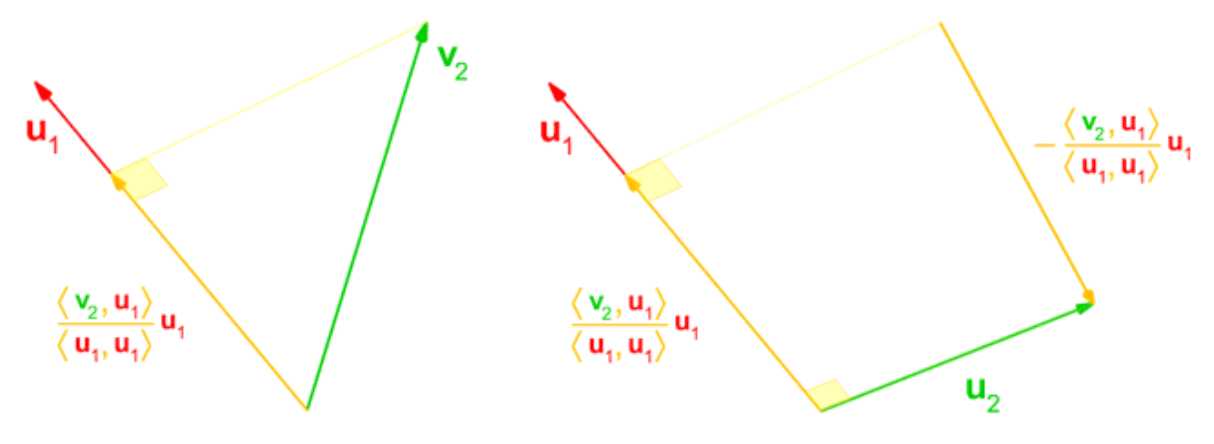Gram-Schmidt Orthogonalization
Gram-Schmidt Orthogonalization
Wiki: Gram-Schmidt Orthogonalization are utilized to transform a finite number of linear independent vectors belonging to inner product space to a set of orthonormal vectors.
Consider we have a set of linear dependent vectors \(\{v_1,v_2,...,v_n\}\), and the corresponding set of orthogonal vectors is defined as \(\{u_1,u_2,...,u_n\}\).
The Orthogonalization goes as follows:
Take \(u_2\) for example, the \(\frac{(u_1,v_2)}{(u_1,u_1)}u_1\) term is the projection of \(v_2\) on \(u_1\), and subtraction of this term from \(v_1\) makes the resultant vector \(u_2\) orthogonal to \(v_1\) since the projection part on \(v_1\)is elimmated from \(v_2\). Following this idea, we are able to achieve the orthogonalization.

Then the normalization goes as follows:
Finally, we get a set of orthonormal vectors which is denoted by \(\{e_1,e_2,...,e_n\}\)

